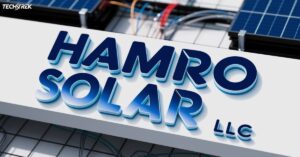OLED (Organic Light-Emitting Diode) is a display technology using organic compounds to emit light when electrified. Unlike LCDs, they need no backlight, enabling thinner, more flexible screens with better contrast and color.
Imagine a phone screen wrapping around its edges, or your wall becoming a paper-thin TV. This technology is turning these ideas into reality, promising to revolutionize our interaction with screens in everyday life.
From smartphones to TVs, they are transforming various industries. Its true blacks, vibrant colors, and wide viewing angles make it increasingly popular. Let’s explore how it works and its potential to shape the future of displays.
What is OLED Technology ?
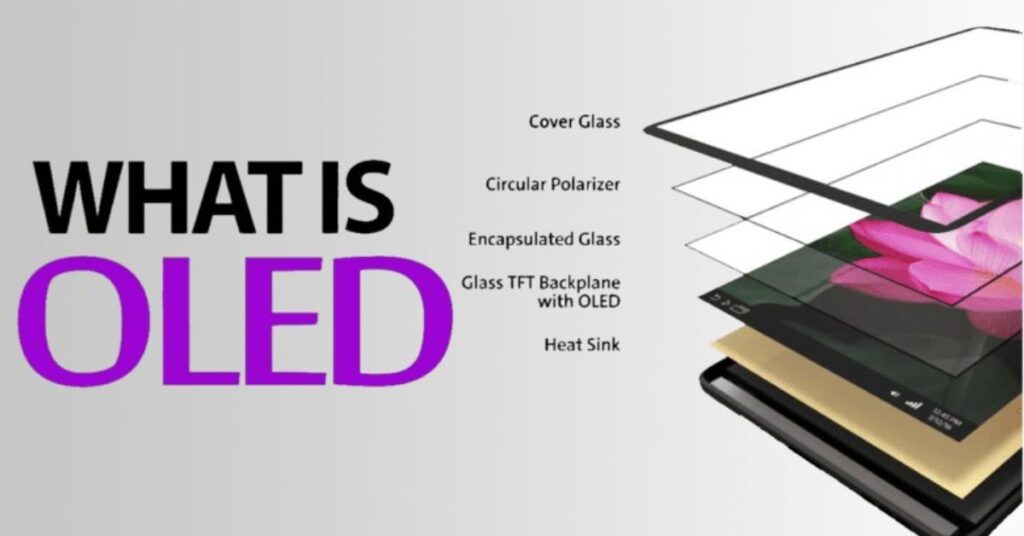
OLED (Organic Light-Emitting Diode) is a display technology where organic compounds emit light when electrified. Unlike LCDs, each pixel produces its own light, enabling thinner screens with better contrast and colors, without needing a backlight.
This self-emissive nature allows for true blacks, high contrast, and wide viewing angles. It’s flexibility enables curved or rollable displays, revolutionizing device design in smartphones, TVs, and more.
Properties of OLED Technology
It offers several unique properties that set it apart from traditional display technologies:
- Self-illumination: Each pixel produces its own light
- Perfect blacks and high contrast: Enables vivid image quality
- Wide color gamut and viewing angles: Rich, accurate colors visible from various positions
- Flexibility and thinness: Allows for curved, bendable, and ultra-slim designs
- Energy efficiency: Consumes less power than many LCD screens
- Fast response time: Minimal motion blur in moving images
How OLED Displays Work
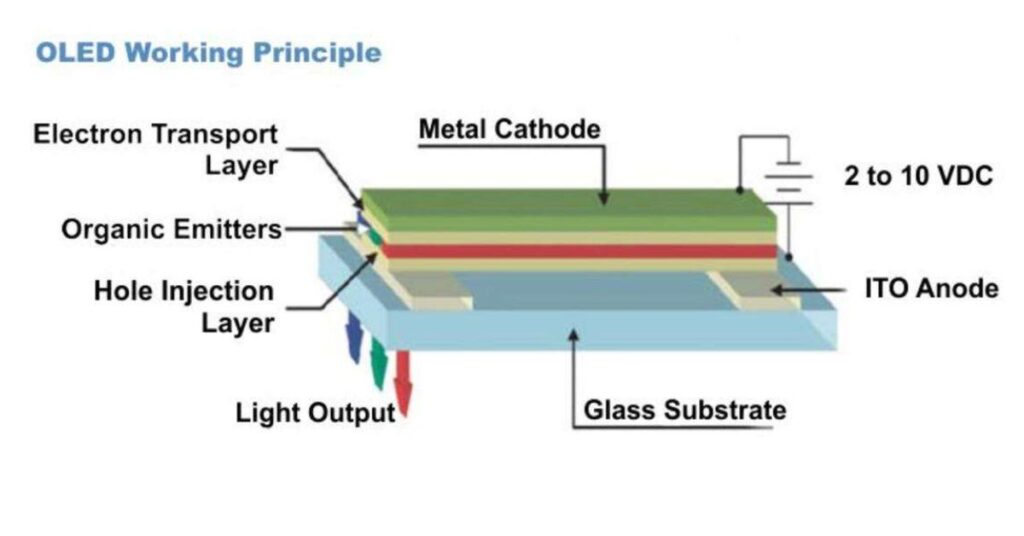
It uses organic compounds that emit light when an electric current passes through them. Each pixel consists of red, green, and blue , which can be individually controlled to produce a wide range of colors.
The basic structure includes an anode, organic layers (emissive and conductive), and a cathode. When current flows, electrons and holes combine in the emissive layer, releasing energy in the form of light.
This technology offers several advantages, including high contrast ratios, wide viewing angles, and the potential for flexible displays. However, challenges include limited lifespan and the possibility of burn-in. Despite these issues,It continue to gain popularity in smartphones, televisions, and other devices due to their superior image quality.
Key Components of an OLED Panel
This panel consists of several essential components:
- Substrate: Base layer, typically glass or plastic
- Anode: Transparent conductive layer • Usually indium tin oxide (ITO)
- Organic Layers: Hole transport layer • Emissive layer • Electron transport layer
- Cathode: Metal layer for electron injection
- Encapsulation: Protective layer against moisture and oxygen
- Thin-Film Transistors (TFTs):Control current flow to each pixel
These components work together to produce the self-illuminating, high-contrast images characteristic.
Read this Blog: THE BEST LED STRIP LIGHTS OF 2024
Types of OLED Displays
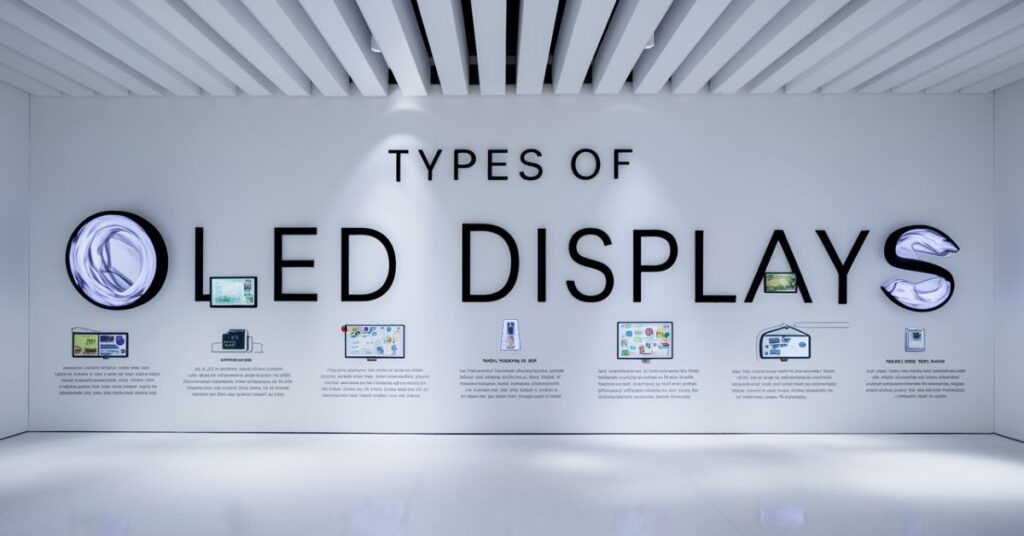
It comes in several types, each with unique characteristics and applications. These include PMOLED, AMOLED, Transparent, Top-Emitting, Foldable, and White.
Passive-Matrix OLED (PMOLED)
PMOLED displays use a simple control scheme where each row of the display is controlled sequentially. This design is cost-effective and energy-efficient for small screens but lacks the precision needed for larger, high-resolution displays. They are commonly used in small devices like MP3 players, car radios, and some wearables.
Active-Matrix OLED (AMOLED)
AMOLED displays incorporate a thin-film transistor (TFT) array to control each pixel individually. This allows for faster refresh rates, better color accuracy, and higher resolution, making it ideal for larger screens and applications requiring high image quality. Smartphones, tablets, and high-end TVs often use this technology.
Transparent OLED
Transparent are designed to be see-through when turned off and display images when activated. They use transparent components for all layers, including the substrate, cathode, and anode. These displays find applications in heads-up displays, smart windows, and augmented reality devices.
Top-Emitting OLED
Top-emitting OLEDs emit light from the top of the display rather than through the substrate. This design allows for higher resolution and improved aperture ratio, as the circuitry can be placed under the emissive layer. Top-emitting are particularly useful in small, high-resolution displays like those in VR headsets.
Foldable OLED
Foldable are flexible displays that can be bent or folded without damaging the screen. They use a plastic substrate and specialized encapsulation to achieve flexibility. Foldable enable innovative device designs, such as smartphones that unfold into tablets or rollable televisions.
White OLED (WOLED)
WOLED technology uses a white layer combined with color filters to produce images. This approach simplifies manufacturing and can potentially increase lifespan. These are primarily used in large displays like televisions, offering excellent color accuracy and energy efficiency.
Advantages of OLED Technology
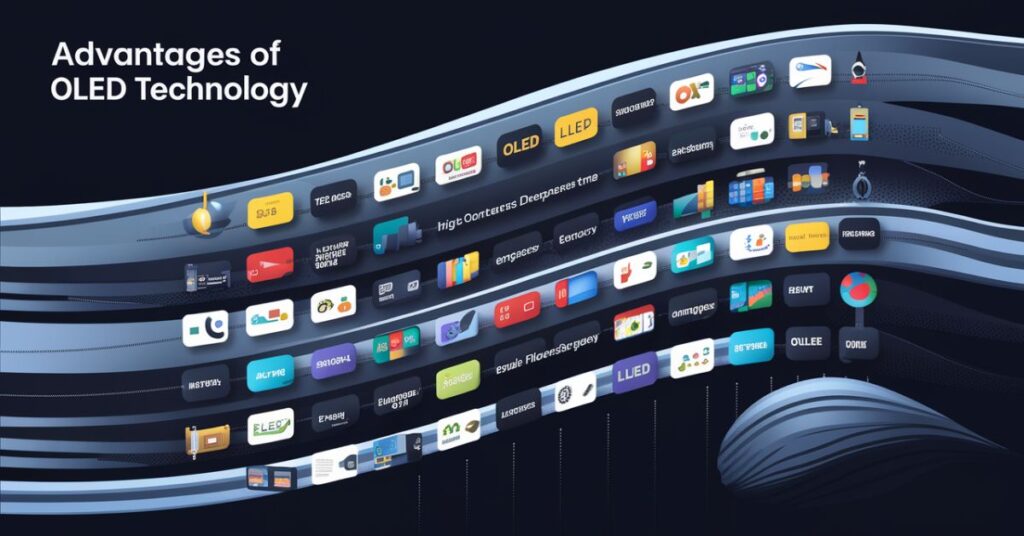
- Superior image quality (high contrast, deep blacks, wide color gamut)
- Energy efficiency (self-emitting pixels, no backlight needed)
- Faster response times
- Flexible form factors (bendable and foldable displays)
- Wide viewing angles
- Thin and lightweight design
- Better performance in low light conditions
These advantages make it increasingly popular in smartphones, televisions, and other electronic devices, offering enhanced visual experiences and design possibilities.
Limitations and Challenges
This technology faces challenges, with longevity being a primary concern. The organic materials, especially those producing blue light, degrade faster than inorganic ones. This leads to color shifts and potential burn-in issues, where static images can leave persistent marks.
Manufacturing complexity and cost remain hurdles for adoption. The production process requires precise deposition of multiple thin layers, making it more expensive than LCD manufacturing. These are also sensitive to moisture and oxygen, necessitating careful encapsulation to protect the materials.
LCD vs OLED : A Comparison
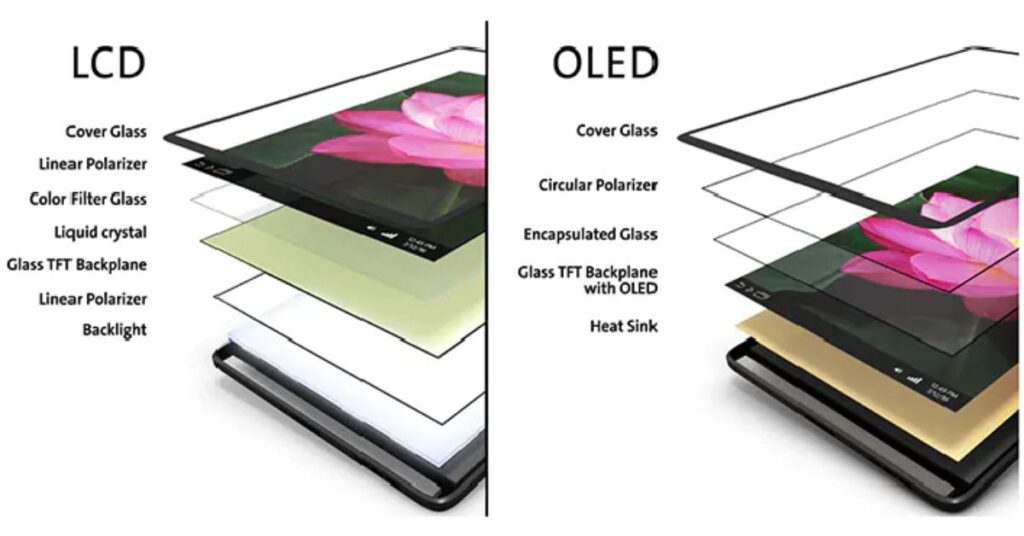
| LCD | OLED |
| Liquid Crystal Display | Organic Light-Emitting Diodes |
| Backlight required | No backlight required (self-emissive) |
| Lower contrast ratio | Very high contrast ratio (true blacks) |
| Generally narrower viewing angles | Excellent viewing angles |
| Slower response time | Very fast response time |
| Higher power consumption | Lower power consumption (esp. with dark content) |
| Longer lifespan | Shorter lifespan (potential burn-in) |
| Lower manufacturing cost | Higher manufacturing cost |
| More durable | More fragile |
| Wide range, easier for larger sizes | Flexible, from small to large sizes |
| Good color accuracy | Very good color accuracy |
| Good brightness, but can be lowe | Very high brightness possible |
Applications of OLED Technology
This technology has revolutionized displays across various industries, offering superior visual quality and design flexibility.
Here are some key applications:
- Smartphones and tablets
- TVs and monitors
- Automotive displays
- Wearables (smartwatches, fitness trackers)
- Lighting solutions
- Medical imaging devices
- Digital signage and advertising
Future Developments in OLED
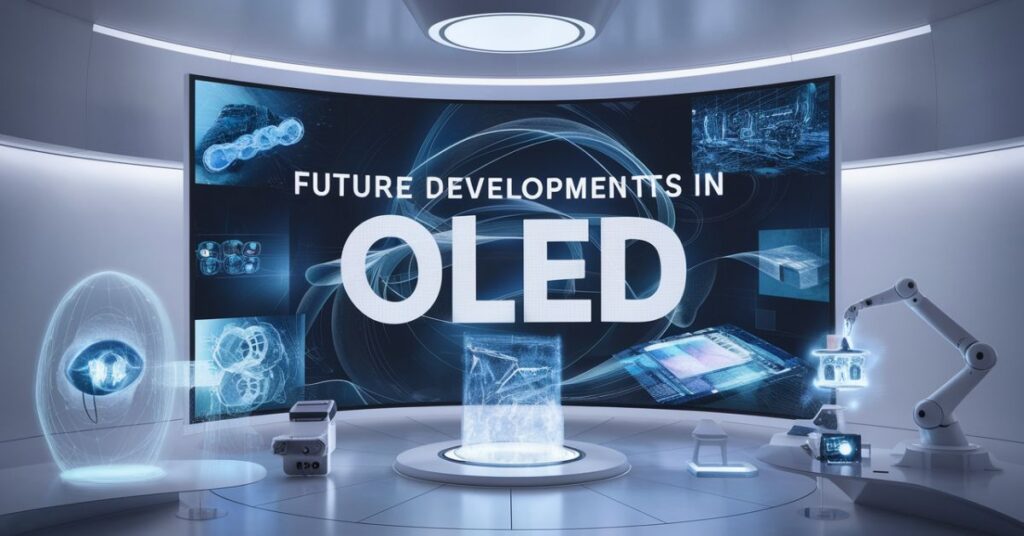
Future developments focus on flexibility and integration. Researchers are perfecting foldable screens and transparent displays, while improving efficiency, lifespan, and brightness. These advancements could revolutionize device design and augmented reality experiences.
Manufacturing innovations aim to reduce costs through printable and explore eco-friendly materials. Integration with micro-LED technology is also being pursued. These developments suggest a future where versatility becomes increasingly common in everyday life.
Manufacturing Process of OLED Displays
The manufacturing process involves several precise steps:
- Substrate preparation: A clean glass, plastic, or metal base is prepared.
- Anode layer deposition: A transparent conductive material, often indium tin oxide (ITO), is applied.
- Organic layer application: Multiple layers of organic materials are deposited using techniques like vacuum thermal evaporation or inkjet printing.
- Cathode layer deposition: A metal layer is added on top of the organic layers.
- Encapsulation: The entire structure is sealed to protect against moisture and oxygen.
- Testing and quality control: Each display undergoes rigorous testing to ensure proper functionality.
This process requires stringent clean room conditions and specialized equipment to achieve the high precision necessary for its production. Manufacturers continually refine these steps to improve efficiency and reduce costs.
Conclusion
This technology represents a significant leap in display and lighting solutions, offering unique properties like perfect blacks, vibrant colors, and flexible form factors.
From smartphones to TVs, it has already transformed our visual experiences across various devices. Its impact continues to grow in areas such as automotive displays and wearable technology.
The future is promising, with ongoing research into foldable displays, transparent screens, and more efficient production methods. As these innovations materialize, it will increasingly shape our digital interactions.
Frequently Asked Questions
What does OLED stand for?
OLED stands for Organic Light-Emitting Diode.
How is OLED different from LED or LCD?
They are self-emissive, requiring no backlight, unlike LED-backlit LCDs.
What are the main advantages of OLED displays?
Perfect blacks, high contrast, wide viewing angles, and potential for flexible screens.
Are OLED displays energy-efficient?
Yes,they are generally more energy-efficient, especially when displaying darker content.
Can OLED screens suffer from burn-in?
Yes, it displays can experience burn-in, but modern technologies have significantly reduced this risk.






